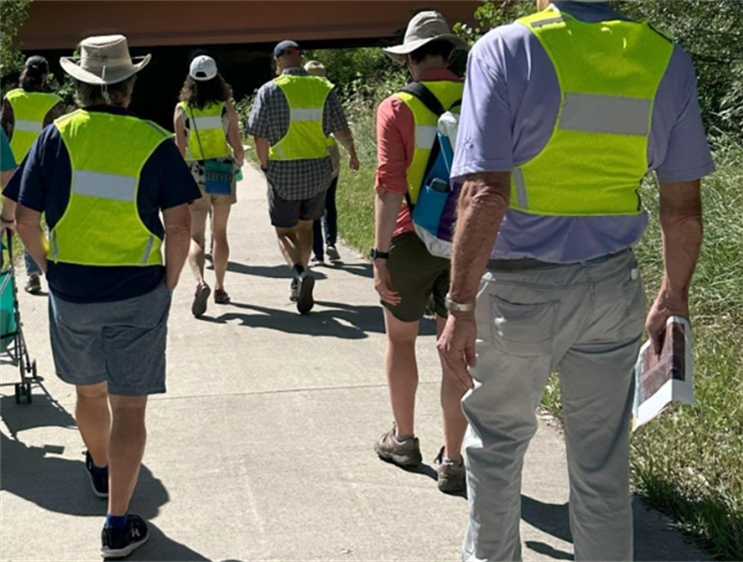
Many United States towns and cities are designed for motor vehicle transportation, which can make walking and biking difficult and even dangerous. A walk audit is a tool to help communities participate in making healthy, safe, and walkable streets by taking a walk together and noting what helps (or does not help) make their streets feel comfortable for walking.
What is a walk audit and why should you do one?
Walk audits are a tool to assess street infrastructure and conditions of a planned route to determine its current walkability, documenting barriers to walking, positive features, safety concerns, wayfinding, and perceptions of the walking environment. Conducting a walk audit can be the start to making positive change in your community, leading to a safer, more accessible, and comfortable walking environment for everyone. Walk audits can be informal and casual events hosted by community members or more formal events with community decision makers, traffic engineers, and public works or parks staff. Whether there is a specific concern, a push to make communities walkable, or to help gather information for grants or public improvement projects, the Weld County Department of Public Health and Environment can help communities hold their own audit and achieve their goals.
Walk audits can be used to:
- Identify walking barriers and benefits in a community.
- Bring community members together to discuss problems and brainstorm solutions.
- Identify disparities by assessing whether different neighborhoods have walking environments that differ in infrastructure and quality.
- Determine problems that can be easily fixed.
- Identify needed improvements to be included in funding asks, plans, and projects.
Simple Steps to a Walk Audit
- Get Ready:
First, identify goals, the route, assessment tools for rating, and plan the details of the walk.
- Get Set:
Second, figure out who to invite and what supplies may be needed.
- Get Walking:
Third, go on the walk! See the Walk Audit Facilitation Guide for more information on how to host a walk.
-
Get Active:
Lastly, determine what changes are needed, who to share observations with, how to share the information, and refer back to original goals.
For full information and guidance on the above steps, see the Facilitation Guide. If you would like one-on-one training to lead a walk audit, need a walk audit facilitator, or prefer a co-lead for your audit, contact Jill M. at ematlock@weld.gov.